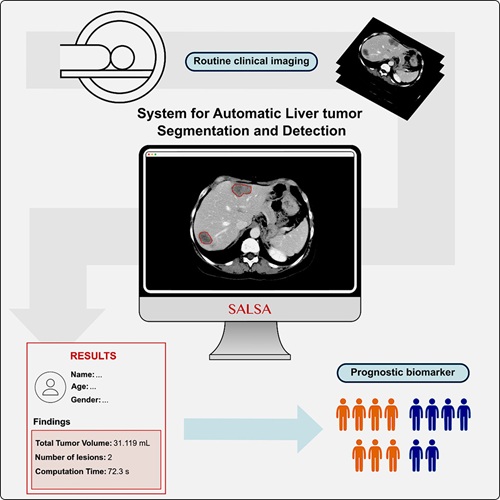Childhood Radiation Exposure Can Be Reduced Significantly Using EMR Decision Support
|
By MedImaging International staff writers Posted on 19 May 2015 |
The results of a study to find ways to reduce the pediatric radiation burden have been published in the May 8, 2015, issue of the Journal of the American Board of Family Medicine.
The study included 115 physicians from 17 US military family medicine training programs, and aimed to find whether an existing clinical decision support system, and the order in which information was presented would impact physician imaging choices. The system included a number of decision enhancement tools in the clinical workflow.
The study was carried out by researchers at the US Uniformed Services University of the Health Sciences (USU; Bethesda, MD, USA), the Cincinnati Children’s Hospital Medical Center (Cincinnati, OH, USA), the US National Library of Medicine (NLM; Bethesda, MD, USA), and the Clemson University (Clemson, SC, USA).
According to the researchers up to 40% of Computed Tomography (CT) scans are unnecessary. When children are exposed to unnecessary ionizing radiation their lifetime malignancy risk increases significantly
Imaging guidelines and clinical decision support systems guiding physicians in the appropriate use of medical imaging are often adopted inconsistently, and are mostly unavailable for children.
To improve the physician’s understanding of radiation doses from common imaging modalities the researchers used American College of Radiology (ACR) Appropriateness Criteria for pediatric clinical scenarios, and looked at how decision support on estimated radiation dose and current imaging guidelines in the Electronic Medical Record (EMR) influenced the selection of pediatric imaging modalities.
The results of the study showed that decision support changed the physicians’ choice of imaging modality. As a result ultrasound, which has no ionizing radiation, became the initial imaging modality of choice for more than 70% of the physicians instead of CT, Magnetic Resonance Imaging (MRI), and multiple types of X-Ray systems.
US Air Force Major, Dr. Christopher W. Bunt, said, “Busy clinicians in the civilian sector or in the military welcome information that helps them make a quick, safe and evidence-based decision. This study provides them with evidence that the information helps save kids from unnecessary radiation exposure. As a parent, I want my kids to receive the imaging studies that they need to diagnose and treat illness or injury. Making sure that these decisions are supported by evidence and are safe for my children is extremely important.”
Related Links:
USU
Cincinnati Children’s Hospital Medical Center
US National Library of Medicine
The study included 115 physicians from 17 US military family medicine training programs, and aimed to find whether an existing clinical decision support system, and the order in which information was presented would impact physician imaging choices. The system included a number of decision enhancement tools in the clinical workflow.
The study was carried out by researchers at the US Uniformed Services University of the Health Sciences (USU; Bethesda, MD, USA), the Cincinnati Children’s Hospital Medical Center (Cincinnati, OH, USA), the US National Library of Medicine (NLM; Bethesda, MD, USA), and the Clemson University (Clemson, SC, USA).
According to the researchers up to 40% of Computed Tomography (CT) scans are unnecessary. When children are exposed to unnecessary ionizing radiation their lifetime malignancy risk increases significantly
Imaging guidelines and clinical decision support systems guiding physicians in the appropriate use of medical imaging are often adopted inconsistently, and are mostly unavailable for children.
To improve the physician’s understanding of radiation doses from common imaging modalities the researchers used American College of Radiology (ACR) Appropriateness Criteria for pediatric clinical scenarios, and looked at how decision support on estimated radiation dose and current imaging guidelines in the Electronic Medical Record (EMR) influenced the selection of pediatric imaging modalities.
The results of the study showed that decision support changed the physicians’ choice of imaging modality. As a result ultrasound, which has no ionizing radiation, became the initial imaging modality of choice for more than 70% of the physicians instead of CT, Magnetic Resonance Imaging (MRI), and multiple types of X-Ray systems.
US Air Force Major, Dr. Christopher W. Bunt, said, “Busy clinicians in the civilian sector or in the military welcome information that helps them make a quick, safe and evidence-based decision. This study provides them with evidence that the information helps save kids from unnecessary radiation exposure. As a parent, I want my kids to receive the imaging studies that they need to diagnose and treat illness or injury. Making sure that these decisions are supported by evidence and are safe for my children is extremely important.”
Related Links:
USU
Cincinnati Children’s Hospital Medical Center
US National Library of Medicine
Latest Imaging IT News
- New Google Cloud Medical Imaging Suite Makes Imaging Healthcare Data More Accessible
- Global AI in Medical Diagnostics Market to Be Driven by Demand for Image Recognition in Radiology
- AI-Based Mammography Triage Software Helps Dramatically Improve Interpretation Process
- Artificial Intelligence (AI) Program Accurately Predicts Lung Cancer Risk from CT Images
- Image Management Platform Streamlines Treatment Plans
- AI-Based Technology for Ultrasound Image Analysis Receives FDA Approval
- AI Technology for Detecting Breast Cancer Receives CE Mark Approval
- Digital Pathology Software Improves Workflow Efficiency
- Patient-Centric Portal Facilitates Direct Imaging Access
- New Workstation Supports Customer-Driven Imaging Workflow
Channels
Radiography
view channel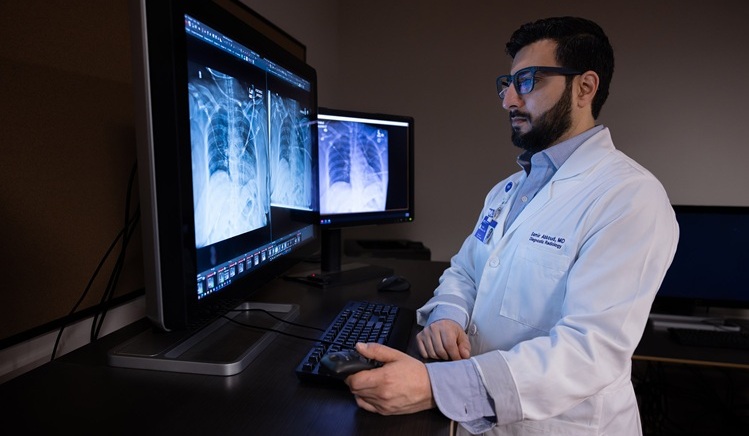
AI Radiology Tool Identifies Life-Threatening Conditions in Milliseconds
Radiology is emerging as one of healthcare’s most pressing bottlenecks. By 2033, the U.S. could face a shortage of up to 42,000 radiologists, even as imaging volumes grow by 5% annually.... Read more
Machine Learning Algorithm Identifies Cardiovascular Risk from Routine Bone Density Scans
A new study published in the Journal of Bone and Mineral Research reveals that an automated machine learning program can predict the risk of cardiovascular events and falls or fractures by analyzing bone... Read more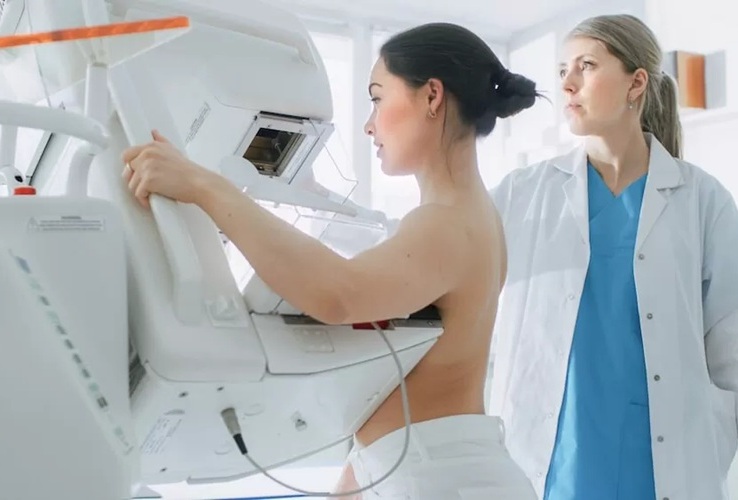
AI Improves Early Detection of Interval Breast Cancers
Interval breast cancers, which occur between routine screenings, are easier to treat when detected earlier. Early detection can reduce the need for aggressive treatments and improve the chances of better outcomes.... Read more
World's Largest Class Single Crystal Diamond Radiation Detector Opens New Possibilities for Diagnostic Imaging
Diamonds possess ideal physical properties for radiation detection, such as exceptional thermal and chemical stability along with a quick response time. Made of carbon with an atomic number of six, diamonds... Read moreMRI
view channel
New MRI Technique Reveals Hidden Heart Issues
Traditional exercise stress tests conducted within an MRI machine require patients to lie flat, a position that artificially improves heart function by increasing stroke volume due to gravity-driven blood... Read more
Shorter MRI Exam Effectively Detects Cancer in Dense Breasts
Women with extremely dense breasts face a higher risk of missed breast cancer diagnoses, as dense glandular and fibrous tissue can obscure tumors on mammograms. While breast MRI is recommended for supplemental... Read moreUltrasound
view channel
New Incision-Free Technique Halts Growth of Debilitating Brain Lesions
Cerebral cavernous malformations (CCMs), also known as cavernomas, are abnormal clusters of blood vessels that can grow in the brain, spinal cord, or other parts of the body. While most cases remain asymptomatic,... Read more.jpeg)
AI-Powered Lung Ultrasound Outperforms Human Experts in Tuberculosis Diagnosis
Despite global declines in tuberculosis (TB) rates in previous years, the incidence of TB rose by 4.6% from 2020 to 2023. Early screening and rapid diagnosis are essential elements of the World Health... Read moreNuclear Medicine
view channel
New Imaging Approach Could Reduce Need for Biopsies to Monitor Prostate Cancer
Prostate cancer is the second leading cause of cancer-related death among men in the United States. However, the majority of older men diagnosed with prostate cancer have slow-growing, low-risk forms of... Read more
Novel Radiolabeled Antibody Improves Diagnosis and Treatment of Solid Tumors
Interleukin-13 receptor α-2 (IL13Rα2) is a cell surface receptor commonly found in solid tumors such as glioblastoma, melanoma, and breast cancer. It is minimally expressed in normal tissues, making it... Read moreGeneral/Advanced Imaging
view channel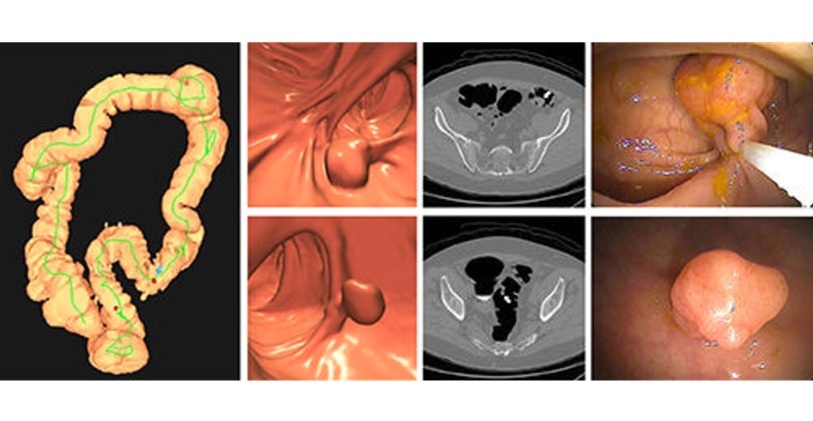
CT Colonography Beats Stool DNA Testing for Colon Cancer Screening
As colorectal cancer remains the second leading cause of cancer-related deaths worldwide, early detection through screening is vital to reduce advanced-stage treatments and associated costs.... Read more
First-Of-Its-Kind Wearable Device Offers Revolutionary Alternative to CT Scans
Currently, patients with conditions such as heart failure, pneumonia, or respiratory distress often require multiple imaging procedures that are intermittent, disruptive, and involve high levels of radiation.... Read more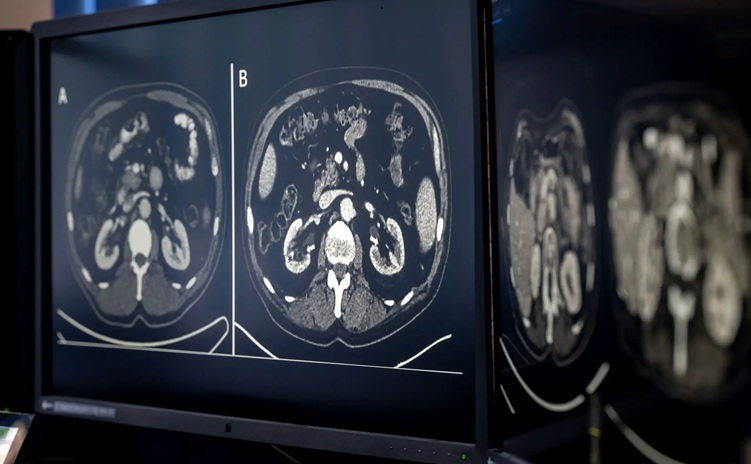
AI-Based CT Scan Analysis Predicts Early-Stage Kidney Damage Due to Cancer Treatments
Radioligand therapy, a form of targeted nuclear medicine, has recently gained attention for its potential in treating specific types of tumors. However, one of the potential side effects of this therapy... Read moreIndustry News
view channel
GE HealthCare and NVIDIA Collaboration to Reimagine Diagnostic Imaging
GE HealthCare (Chicago, IL, USA) has entered into a collaboration with NVIDIA (Santa Clara, CA, USA), expanding the existing relationship between the two companies to focus on pioneering innovation in... Read more
Patient-Specific 3D-Printed Phantoms Transform CT Imaging
New research has highlighted how anatomically precise, patient-specific 3D-printed phantoms are proving to be scalable, cost-effective, and efficient tools in the development of new CT scan algorithms... Read more
Siemens and Sectra Collaborate on Enhancing Radiology Workflows
Siemens Healthineers (Forchheim, Germany) and Sectra (Linköping, Sweden) have entered into a collaboration aimed at enhancing radiologists' diagnostic capabilities and, in turn, improving patient care... Read more


















